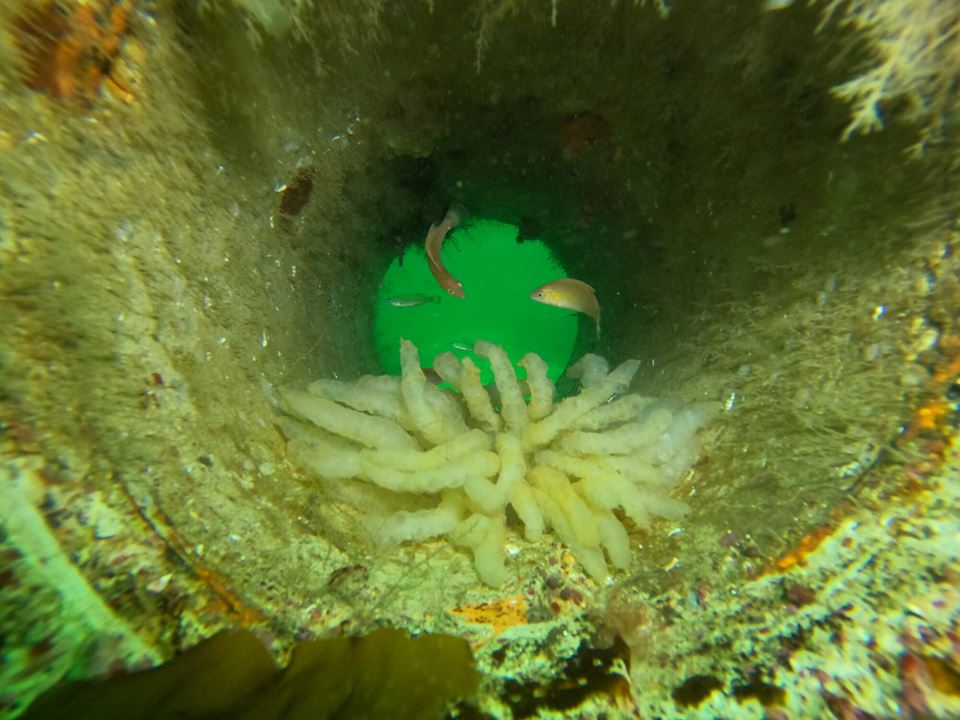Marine habitats are facing unprecedented threats, with 66 per cent of coastal areas already altered and degraded.
Bottom-contact fisheries, which use indiscriminate trawling, physically damage almost five million square kilometres of the seafloor each year.
Other threats, such as marine litter and chemical pollution, are increasingly disrupting key ecosystem processes and putting marine biodiversity at risk. Although oil and gas drilling typically cause damage in specific areas, accidents like the Deepwater Horizon oil spill in 2010 have had serious and lasting effects on deep-sea wildlife.
Seabed mining is expected to expand, which could impact large areas of the deep seafloor, including areas like the Clarion-Clipperton zone in the Pacific Ocean.
Protection might not be enough
The UN Agenda 2030 aims to protect 30 per cent of the marine environment by 2030. The EU-projects CLIMAREST and REDRESS both work towards these targets by developing and testing solutions for coastal and deep-sea habitats respectively.
“This target may be insufficient to reverse current declines in specific habitats and overall ecosystem functionality,” says Roberto Danovaro.
He is a professor at the Polytechnic University of Marche and project coordinator of REDRESS.
Danavaro explains that ecological restoration is essential. This involves reintroducing habitat-forming species like seagrass meadows, mangroves, kelp forests, coral reefs, and temperate animal forests.
“Several coastal habitats need to be restored for their crucial role in maintaining biodiversity and sustaining ecosystem processes in the ocean,” says Professor Simonetta Fraschetti at the University of Naples.
Passive restoration, which means simply removing disturbances and letting nature recover on its own, can help degraded habitats bounce back.
However, Danovaro warns that full recovery through passive restoration could take between 100 and 200 years, especially for ecosystems where habitat-forming species need a long time to build habitats.
“Active restoration measures, such as stabilizing the seafloor and planting organisms, can significantly accelerate recovery” says Cristina Gambi, a researcher at the Polytechnic University of Marche and REDRESS project manager.
Success stories are crucial
In an article in Nature, a team of researchers present a meta-analysis of 764 restoration projects across various marine habitats worldwide. The analysis shows an average success rate of 64 per cent.
Restoration efforts have proven viable for many different types of habitats, including deep-sea ecosystems, and have been especially successful for saltmarshes, coral reefs, and habitat-forming species.
“In this work, we show that the development of new approaches to marine ecosystem restoration enables expansion of efforts over larger spatial scales and even within impacted areas, as demonstrated by an increasing number of success stories showing the effective recovery of diverse habitat types,” says Fraschetti.
Such success stories make a global ‘blue restoration’ plan with new, affordable technologies more feasible.
“Success stories from marine ecosystem restoration are crucial to motivate society and private enterprises to invest. We need to show that these efforts can meet the UN Decade on Ecosystem Restoration targets,” says Danovaro.
Immediate restoration yields high success
The results also suggest that major progress can be made by restoring heavily impacted areas, even when not all stressors can be controlled.
Danovaro explains that this finding could change the current approach to marine ecological restoration. It shows that restoration work can start immediately without waiting for the environment to improve. This would allow quicker returns on investments in restoring degraded habitats.
What drives restoration success
To understand what factors determine or promote the recovery of restored habitats, the researchers closely re-examined a dataset of 618 case studies and identified the key drivers of success.
The main factors for restoration are:
- The methods used for restoration are the main driver of success.
- Ongoing maintenance of restored habitats is the second most important factor, highlighting the need to work closely with local groups such as fishermen and diving centres.
- Careful site selection is the third key factor. Success rates are higher when sites have high ecological connectivity, offer refuge for species sensitive to climate change, and are sheltered from physical disturbance like storms, wave action, erosion, and sedimentation.
- The fourth most cited factor is the creation of buffer areas, such as marine protected areas and fishery-restricted areas, around the restored site to reduce pressures from human activity.
The researchers also found that restoration efforts completely failed – meaning zero survival – when environmental conditions were unsuitable, when extreme events caused large-scale deaths, and when the wrong methods or species were chosen.
Marine ecosystem restoration needs support
The study shows that successful marine ecosystem restoration depends on three main types of support: policy and regulatory, economic backing, and technological solutions.
Policy and regulatory support involve creating rules and obligations to restore damaged habitats. This includes international efforts like the UN’s ecosystem restoration priority for 2021-2030, national policies such as the EU’s Nature Restoration Law, and local rules like the polluter pays principle.
Economic support is about recognising the social, economic, and cultural value of restoration investments. Public funding remains the primary source, but private companies are increasingly seeing ecosystem restoration as a smart investment, creating new job opportunities and eco-friendly innovations.
Technological support involves developing tools and methods that can work in all types of marine habitats and on a large scale.
“All these types of support are crucial for successful marine ecosystem restoration and really needed considering present degradation state of our marine ecosystems,” says Fraschetti.
Fact box:
About the project
The research is partially conducted in CLIMAREST, which is an EU-funded research project consisting of 18 partners from along the length of the European coastline. SINTEF coordinates the project. The project is part of the EU Mission Restore our Ocean and Waters.
In the project, researchers are developing and testing solutions for large-scale restoration of coastal marine habitats at five demonstration sites in the Arctic-Atlantic region.
These solutions will later be replicated in locations in the Baltic Sea and the Mediterranean.
“In the process we have a high focus on engaging stakeholders as well as monitoring the success and benefit of our actions to leverage future investment for long term success. This study is an important piece of the puzzle in order to plan and predict success in the CLIMAREST demos,” says project coordinator Ida Beathe Øverjordet at SINTEF.
Reference:
R. Danovaro, J. Aronson, S. Bianchelli, C. Boström, W. Chen, R. Cimino, C. Corinaldesi, J. Cortina-Segarra, P. D’Ambrosio, C. Gambi, J. Garrabou, A. Giorgetti, A. Grehan, A. Hannachi, L. Mangialajo, T. Morato, S. Orfanidis, N. Papadopoulou, E. Ramirez-Llodra, C. J. Smith, P. Snelgrove, J. van de Koppel, J. van Tatenhove & S. Fraschetti: Assessing the success of marine ecosystem restoration using meta-analysis, Nature Communications, vol. 16, 2025


